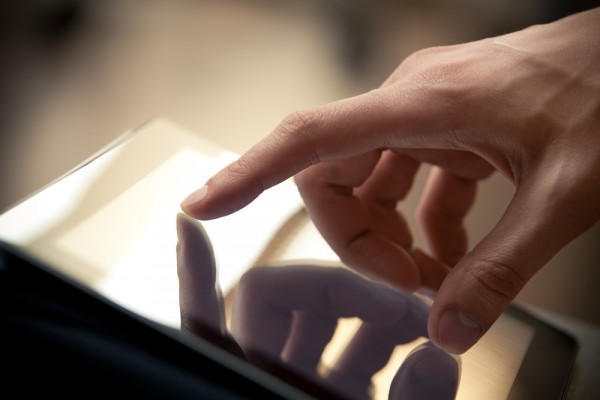
With the advent of advances in technology and the increasing power of process, we are witnessing a tremendous transition in the design of user experiences and interface design in software development. Of particular interest in this article is the culmination of natural user interface design as it relates to the current crop of touchscreen laptops made possible by Windows 8.
One of the things I have noticed as more and more tech sites review touchscreen laptops is the increasing amount of comments such as, "I would never touch a screen on a laptop" or "why would anyone ever need to touch a screen on a laptop?" The problem with the comments, the thinking is limited by mouse and keyboard. Windows 8 is the first operating system to force us to move beyond this thinking when it comes to using traditional computing devices like desktops and laptops.
If you don’t think touch screens on laptops are useful, just watch someone use a keyboard with an iPad. Sometimes, it just feels more natural to touch the screen in certain instances rather than use the keyboard. For instance, I have Surface RT and use it on a regular basis for simple computing task ranging from consuming content to creating content. Using Windows RT, I find myself moving between mouse/keyboard input to touch. Why? Because there are times where it feels more natural to me to touch the screen rather than fiddling with a mouse/keyboard input.
I find this freedom to be quite pleasing and necessary for the future of computing going forward and is why I believe that Joe Wilcox’s article about context in computing is an important aspect of the future of computing going forward. Further, I believe that Microsoft (along with Windows 8) recognized this long ago and we are finally realizing the benefits of contextual computing in Windows 8 (more on this in a future article).
That said, this is why touchscreens on laptops are finally making an appearance. Finally computing devices are not forcing us to use the traditional keyboard/mouse combo regardless of our computing situation. For instance, the ability to touch a screen makes way more sense when demoing a mobile app being developed rather than using the keyboard/mouse combo.
Further, sometimes it just feels more natural to touch the screen. The beauty of this for a user experience developer like myself is that, the use cases will not be the same for everyone. For example, when I fill out a form in Internet Explorer 10 on my Surface, I find it more natural to select my field by touch rather than mouse/keyboard or tabbing. The greatness of this is that I can keep my hands on the keyboard if that is more natural for me, or use the touchscreen.
My point in all of this is that what may not be natural for the negative critic of touchscreens on traditional computing devices like laptops (or even desktops) may not necessarily be non-natural for the next person. Just because Apple has not added touchscreens to traditional computing devices does not mean people will not use them or even more, don’t need them.
We have entered the age of natural user interfaces. Right now we see an explosion of touch and mouse/keyboard usage on traditional computing devices. Soon, hopefully in 2013, we will see the addition of voice and camera input on these devices (Microsoft Chairman Bill Gates is on record as saying these are coming to Windows in the future). Something tells me that with all the data Microsoft collects on the Xbox through Kinect, and the bit of data collected on Windows Phone devices, the company is in the best position to take advantage of this prime opportunity to advance devices for the natural user interface age. While right now we have the benefits of mouse/keyboard/touch input, soon, we will see the addition of voice and camera inputs as well that will absolutely simplify our computing experiences like never before.
If you don’t think touchscreens on laptops or desktops make sense, think again. It’s the future. Get ready for it as you may be surprised to see your index finger gently making its way toward your monitor to make a selection you typically would make with your mouse.
Photo Credit: bloomua/Shutterstock

